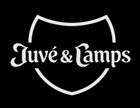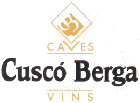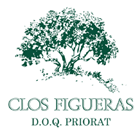Fèlix Massana Ràfols
by
Kathy and Terry Sullivan
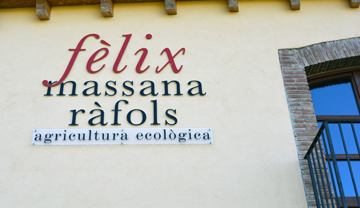 Summary: Cavas produced with organically grown grapes is a focus of the bodega Fèlix Massana Ràfols. This boutique family winery is located in the bucolic village of San Pau d’Ordal. The family run winery is looking to its future and paving the way to producing biodynamic wines. Wine tourists have unique options for a visit including disgorging a cava bottle by hand.
Summary: Cavas produced with organically grown grapes is a focus of the bodega Fèlix Massana Ràfols. This boutique family winery is located in the bucolic village of San Pau d’Ordal. The family run winery is looking to its future and paving the way to producing biodynamic wines. Wine tourists have unique options for a visit including disgorging a cava bottle by hand.
Fèlix’s family has been involved in the wine industry beginning when Felix’s grandfather worked vineyards for a land owner. Eventually Fèlix’s family began to purchase vineyards, a little at a time. Today they own 20 hectares (49 acres) of organic vineyards that include the indigenous varieties: Xarel.lo, Macabeo and Parellada. In addition they grow international grapes including Cabernet Sauvignon, Syrah, Chardonnay and Tempranillo.
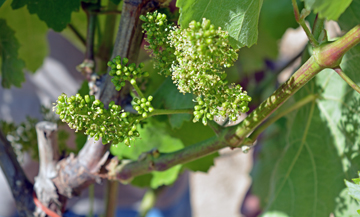 Together, Fèlix Massana Ràfols and his wife, will conduct a tour of the winery and vineyard. On a tour of one of the vineyards, we learned that the bodega has several vineyards with the same variety of grape growing in different locations. “There are noticeable differences in Xarel.lo grown in different locations,” exclaimed Cristina. The benefit of providing different terroirs for the same grape enhances the ability to make blends for cavas. Some of the grapevines were planted more than 50 years ago. Grapes are handled delicately during harvest with grapes picked and placed into 20 kilogram (44 pound) lugs. The grapes are kept cool in a refrigerated truck until they reach the cellar for processing. Once in the cellar, each grape variety from each vineyard is vinified separately.
Together, Fèlix Massana Ràfols and his wife, will conduct a tour of the winery and vineyard. On a tour of one of the vineyards, we learned that the bodega has several vineyards with the same variety of grape growing in different locations. “There are noticeable differences in Xarel.lo grown in different locations,” exclaimed Cristina. The benefit of providing different terroirs for the same grape enhances the ability to make blends for cavas. Some of the grapevines were planted more than 50 years ago. Grapes are handled delicately during harvest with grapes picked and placed into 20 kilogram (44 pound) lugs. The grapes are kept cool in a refrigerated truck until they reach the cellar for processing. Once in the cellar, each grape variety from each vineyard is vinified separately.
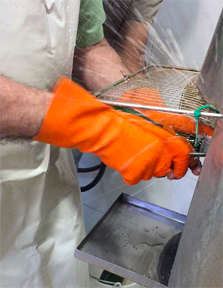 The Fèlix Massana Ràfols winery is easy to find with its bright yellow side and its name highlighted. The winery is located off of a quiet street with a patchwork quilt-like vineyard on the other side of the road. Through the dark wooden, arched doorway into the winery, a small counter is on the right. This counter was used for our cava tasting. On this floor, there is a plethora of winery equipment including a hand degorging apparatus, a bottle corker and a hand machine for attaching the wire cage (muselet). Interested wine tourists may select a special day with the winemaker where they will have an opportunity to disgorge a bottle of cava in a traditional way without freezing the neck. The trick is to watch the bubble in the bottle as you slowly raise the neck of the bottle from a downward position to an upward position. When the bubble first reaches the neck, remove the cap and quickly place your thumb over the opening before you lose the precious cava. Then wine enthusiasts will cork and place the muselet on the bottle as well as place the capsule over the cork and label the bottle. We had an enjoyable time disgorging a bottle and corking it. Cava enthusiasts should not miss this opportunity.
The Fèlix Massana Ràfols winery is easy to find with its bright yellow side and its name highlighted. The winery is located off of a quiet street with a patchwork quilt-like vineyard on the other side of the road. Through the dark wooden, arched doorway into the winery, a small counter is on the right. This counter was used for our cava tasting. On this floor, there is a plethora of winery equipment including a hand degorging apparatus, a bottle corker and a hand machine for attaching the wire cage (muselet). Interested wine tourists may select a special day with the winemaker where they will have an opportunity to disgorge a bottle of cava in a traditional way without freezing the neck. The trick is to watch the bubble in the bottle as you slowly raise the neck of the bottle from a downward position to an upward position. When the bubble first reaches the neck, remove the cap and quickly place your thumb over the opening before you lose the precious cava. Then wine enthusiasts will cork and place the muselet on the bottle as well as place the capsule over the cork and label the bottle. We had an enjoyable time disgorging a bottle and corking it. Cava enthusiasts should not miss this opportunity.
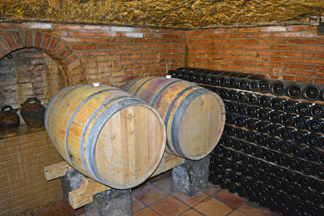 The tour leads up narrow steps to the second floor with a press and several various sizes of stainless steel tanks. A doorway leads to a balcony with views of peaceful vineyards. The tour then leads to the cellar that has two sections. The first section has a display of backlit bottles that allows visitors to see the yeast moving to the neck of wine bottles. The second section of the cellar provides more interest. This area was dug out of rock by family members including Felix’s father. The ceiling is hard rock and has many fossils buried in the ceiling stone. At one time this land was under water. Visitors can easily find sea fossils in the ceiling. French and American oak barrels and cava bottles line the perimeter of the room. A long, wood table is used for intimate wine tastings.
The tour leads up narrow steps to the second floor with a press and several various sizes of stainless steel tanks. A doorway leads to a balcony with views of peaceful vineyards. The tour then leads to the cellar that has two sections. The first section has a display of backlit bottles that allows visitors to see the yeast moving to the neck of wine bottles. The second section of the cellar provides more interest. This area was dug out of rock by family members including Felix’s father. The ceiling is hard rock and has many fossils buried in the ceiling stone. At one time this land was under water. Visitors can easily find sea fossils in the ceiling. French and American oak barrels and cava bottles line the perimeter of the room. A long, wood table is used for intimate wine tastings.
When it comes to cava making, Fèlix can only use up to 66 percent of the first press. The leftover juice and grapes are sold to a nearby business that makes rubbing alcohol. In crafting Fèlix Massana Ràfols wines and cavas, Felix likes aging the wines longer than the necessary time dictated by the Cava Regulatory Board.
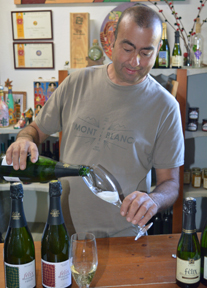 Cavas
Cavas
We sampled a 2011 Cava Brut Nature. This organic cava was a light yellow color blend of 65% Xarel.lo, 20% Macabeo and 15% Parellada. The bubbles were lively with multiple beads of bubbles forming a mousse on the surface. There was citrus on the aroma and taste. This refreshing cava makes a good aperitif for any hour of the day.
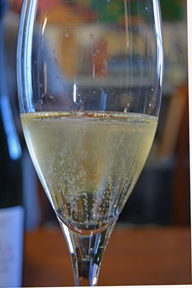 Prior to disgorging our bottle of cava, Fèlix demonstrated the process. We tasted the bottle of cava he disgorged. It too was a Brut Nature. The yellow colored cava had multiple beads forming a mousse. The aroma and taste included apple and citrus and the cava was lively in the mouth.
Prior to disgorging our bottle of cava, Fèlix demonstrated the process. We tasted the bottle of cava he disgorged. It too was a Brut Nature. The yellow colored cava had multiple beads forming a mousse. The aroma and taste included apple and citrus and the cava was lively in the mouth.
We also tasted the Brut Nature Reserva, a 2011 blend of 60% Xarel·lo, 25% Macabeo and 15% Parellada. The light yellow color had lively bubbles forming a mousse on the surface. The aroma and taste offered apple and citrus. There was a pleasant mouthfeel and fruity finish. The cava had a long mineral aftertaste. The 2010 Brut Nature Gran Reserva was a blend of 65% Xarel·lo, 20% Macabeo and 15% Parellada. This yellow colored cava had a slow stream of bubbles rising to the surface. There were orange blossoms with a hint of mineral on the aroma. The taste offered orange blossoms and bread dough with a lively mouthfeel. There were orange blossoms on the finish.
Wine Tourism
Call for an appointment to taste wine and cava. The owners prefer to do their tastings in the cellar where numerous fossils can be located in the ceiling. The winery offers four different types of tours and tastings.
Contact the winery for details.
Fèlix Massana Ràfols
Carrer de la Font, 33
08739 Sant Pau d'Ordal
(Barcelona), Spain
Article written June 2015
Please support the following.
 |
|||
 |
 |
